The Industry’s Secure Facultative Connection Between Insurers and Reinsurers
Latest News
No recent releases
Submit Life Insurance
Cases to Reinsurers
FAC Exchange is an ecosystem for sharing life cases between insurers and reinsurers for facultative coverage and more.
Key Benefits
-

Lower Integration Costs
-

Streamlined Reinsurance Submissions
-

Standardized Structured Data
-

Secure, Private Solution that Evolve that Evolves with the Regulatory Environment
Available Now:
Case Submissions
Carriers can electronically send facultative cases to multiple reinsurers from a single point.Quote Offer
Reinsurers can send quotes using an industry standardized format that can be readily consumed by carriers.Audit Capabilities
FAC Exchange can provide a full transaction history, including date sent/received, status requests, quote history, and acceptance notice history.Quarterly Uptime Report
Report can include uptime, incidents, and explanations for outages.Sub Carrier Codes
Allows use of aliases when sending to main API endpoint to support sending cases from a subordinate MIB code.Client Notifications
Alerts for carriers and reinsurers to notify of cases that were not sent successfully.Acceptance and Not Taken Notices
Carriers will be able to respond to reinsurer quotes with an Accept or Not Placed indicator.
Coming Soon:
Reinsurer Attachments
Status Updates
Available Now
Case Submissions
Carriers can electronically send facultative cases to multiple reinsurers from a single point.
Quote Offer
Reinsurers can send quotes using an industry standardized format that can be readily consumed by carriers.
Audit Capabilities
FAC Exchange can provide a full transaction history, including date sent/received, status requests, quote history, and acceptance notice history.
Quarterly Uptime Report
Report can include uptime, incidents, and explanations for outages.
Sub Carrier Codes
Allows use of aliases when sending to main API endpoint to support sending cases from a subordinate MIB code.
Client Notifications
Alerts for carriers and reinsurers to notify of cases that were not sent successfully.
Acceptance and Not Taken Notices
Carriers will be able to respond to reinsurer quotes with an Accept or Not Placed indicator.
Coming Soon
Reinsurer Attachments
Status Updates
Available Now
-
Carriers can electronically send facultative cases to multiple reinsurers from a single point.
-
Reinsurers can send quotes using an industry standardized format that can be readily consumed by carriers.
-
FAC Exchange can provide a full transaction history, including date sent/received, status requests, quote history, and acceptance notice history.
-
Report can include uptime, incidents, and explanations for outages.
-
Allows use of aliases when sending to main API endpoint to support sending cases from a subordinate MIB code.
-
Carriers will be able to respond to reinsurer quotes with an Accept or Not Placed indicator.
-
Coming Soon
Status Updates
Available Now:
Case Submissions
Carriers can electronically send facultative cases to multiple reinsurers from a single point.
Quote Offer
Reinsurers can send quotes using an industry standardized format that can be readily consumed by carriers.
Audit Capabilities
FAC Exchange can provide a full transaction history, including date sent/received, status requests, quote history, and acceptance notice history.
Quarterly Uptime Report
Report can include uptime, incidents, and explanations for outages.
Sub Carrier Codes
Allows use of aliases when sending to main API endpoint to support sending cases from a subordinate MIB code.
Client Notifications
Alerts for carriers and reinsurers to notify of cases that were not sent successfully.
Acceptance and Not Taken Notices
Carriers will be able to respond to reinsurer quotes with an Accept or Not Placed indicator.
Coming Soon:
Reinsurer Attachments
Status Updates
Migration Process
What might a typical migration look like? There are many factors that will influence a plan to migrate to FAC Exchange. The following migration plan represents a best-case scenario. The RGA team will work with each carrier and reinsurer to design a plan that meets individual needs.
What might a typical migration look like?
Questions?
We have answers!
-
No carrier or reinsurer will get preferential treatment. Instead, cases will be sent to reinsurers in the order received, and the system architecture is carrier and reinsurer agnostic.
-
There is no software licensing or usage fee for carriers, nor is there any fee for ongoing support or development. Carriers may incur development costs to integrate with FAC Exchange, however.
-
FAC Exchange participants can expect 24-hour support, seven days a week, provided at no cost to both direct carriers and reinsurers. Support is available by email at facsupport@rgare.com and by phone at 888-436-2655.
-
FAC Exchange transactions use ACORD standards for all incoming and outgoing transmissions. Customized data processing for each reinsurer will no longer be needed.
-
FAC Exchange is delivered through an application programming interface (API). The API is cloud-based, requiring no onsite installation and enabling a 1:1 carrier-to-reinsurer connection.
-
The only costs incurred by a carrier or reinsurer during the migration to FAC Exchange would be internal system development costs. There are no fees to migrate to FAC Exchange and RGA does not charge for support costs. Migration costs will vary depending on the systems and processes for each carrier or reinsurer. Contact the FAC Exchange Team to get copies of our API Guide, data specification, and testing activities. These tools can help your technology teams estimate the integration costs. We can also set up a technical review meeting to answer any questions.
-
This dataflow diagram illustrates how carriers and reinsurers will connect to FAC Exchange via integration with an API (application program interface). Facultative cases, consisting of structured data and images, will flow from the carrier to their specified reinsurer(s). Quotes will flow from each reinsurer back to the originating carrier.




